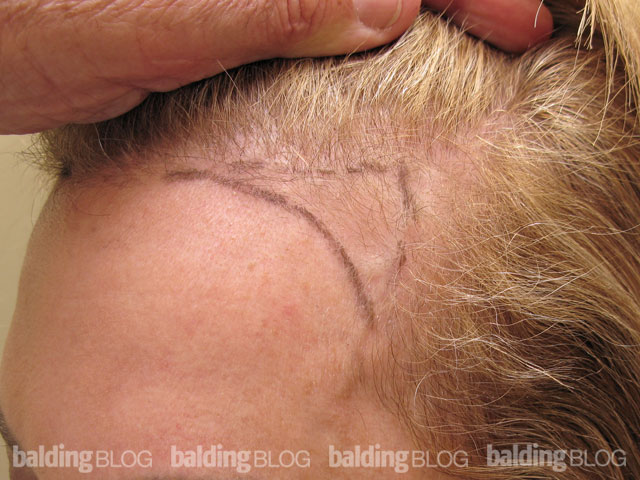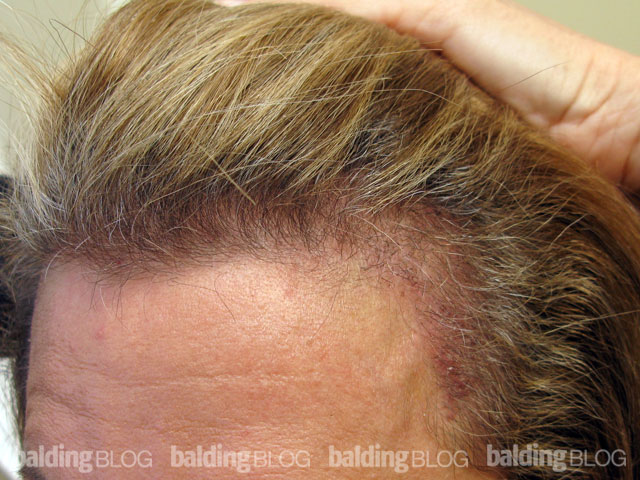Dear Doctor,
I have been doing a lot of reading about hair transplants because I see one in my near future. I have heard enough horror stories to know the importance of choosing a great transplant surgeon.
It just seems to me that the doctor’s role is “overrated.” I certainly do not mean any disrespect by that, but it seems that the transplant technicians have more of a role in the outcome, whether it be good or bad, than the doctor himself.
From what I understand, the doctor justs removes the donor strip, sutures the incision and makes the recipient sites. I may be ignorant of the matter, but this seems like something any general surgeon can easily do. The technicians though are responsible for dissecting and actually placing the grafts. If a transplant’s outcome is judged to be a success or not by the number of grafts that actually grow, then it seems that the technicians were more responsible for the outcome than the surgeon who merely made the holes in the person’s head.
I hope you don’t take anything I wrote as a slight against you or your profession, but if what I wrote is not true, please tell me what am I missing in my thinking?

The role of the technician is very important. What they do requires special skills that are tedious and at times require years to perfect. The hair that is cut from the strip must be efficiently dissected under the microscope and handled efficiently. Such work is best for a technician who has these functions as their sole activity. It takes a certain type of personality to be able to perform this type of work, great dexterity, and hand-eye coordination. Not to say no doctor has these things, but the complete skill list is honestly not the type that most doctors have. When I started to do the hair transplant procedures in larger and larger sessions, I originally participated in the cutting and placing the grafts, for it was I who defined the standards that the technicians would be held accountable for. So in the early days (1992-1993), I was the fastest graft preparer and the fastest graft placer, but as the graft counts went into the thousands of grafts, the work required more and more labor. Four or five technicians are a minimum number required for a large case of over 3000 grafts in 6-7 hours.
If I was to do this myself without the technicians, it would take me more than 24 hours and I would be exhausted, my eye strain would be incalculable, and the grafts may have died off by the time their turn came to placing them. If a graft is out of the body more than 8 hours, the death rate for the grafts runs 1% per hour. One could say, “Hey, lets get 5 surgeons to replace the 5 or so technicians,” but what that would do is:
- Slow the process down, as doctors are generally not good at such disciplines.
- Reduce the quality of the work, as doctors can not do repetitive work reliably for they often lack the patience.
- Drive up the costs substantially out of the reach of most recipients, as doctors make more money than technicians.
Those reasons, in a nutshell, are why technicians are used throughout surgery. Another example where technicians are used in surgical procedures — open heart surgery. It is the pump technicians that control the patient’s circulation.
Now with regard to what the surgeon does, it is not as simple as you suggest. There is a special skill required in planning the surgery, and I suppose to prove this you’d have to spend a day with me to see the many patients that come in for repairs with results reflecting a lack of strategy in their hair transplant procedure. When a doctor just looks at it as cutting out a strip and putting holes in the head of the patient, the results can be frequently substandard. So while I don’t take what you said as a slight, I hope this helps explain things a little better.
![]()
![]()





 I don’t see why the lack of propylene glycol would make minoxidil ineffective. The propylene glycol is supposed to help the minoxidil penetrate the scalp better, but it isn’t used in the Rogaine Foam or in the Women’s Rogaine liquid (which is good for those that may have allergies to propylene glycol), so I’d expect that other delivery mechanisms, such as alcohol, work relatively well. I really have no opinion on the various ways the doctors make their minoxidil formulas. The recommended use is twice a day, but many people do use it once a day. I can not tell if once a day works across the board.
I don’t see why the lack of propylene glycol would make minoxidil ineffective. The propylene glycol is supposed to help the minoxidil penetrate the scalp better, but it isn’t used in the Rogaine Foam or in the Women’s Rogaine liquid (which is good for those that may have allergies to propylene glycol), so I’d expect that other delivery mechanisms, such as alcohol, work relatively well. I really have no opinion on the various ways the doctors make their minoxidil formulas. The recommended use is twice a day, but many people do use it once a day. I can not tell if once a day works across the board.